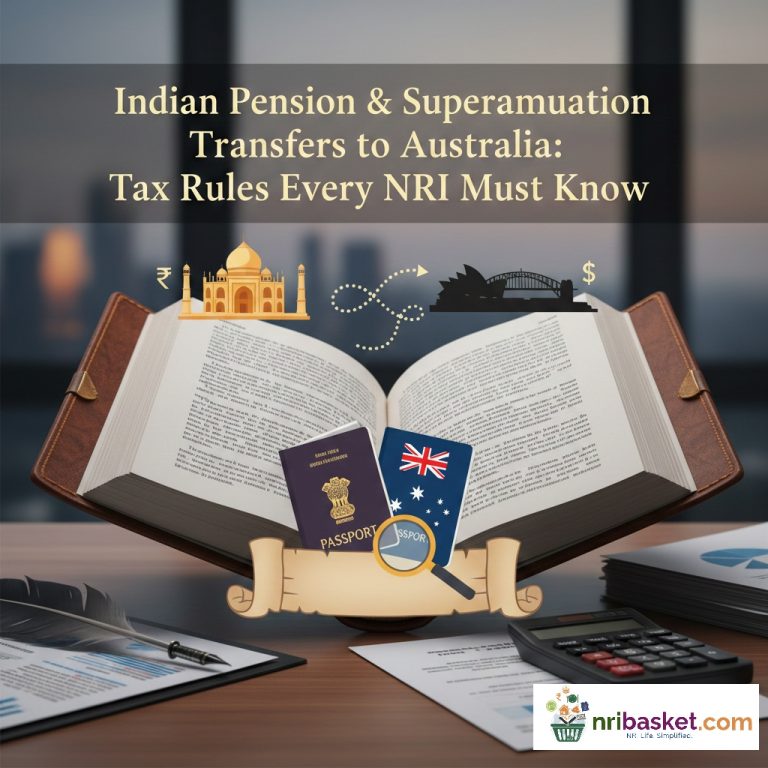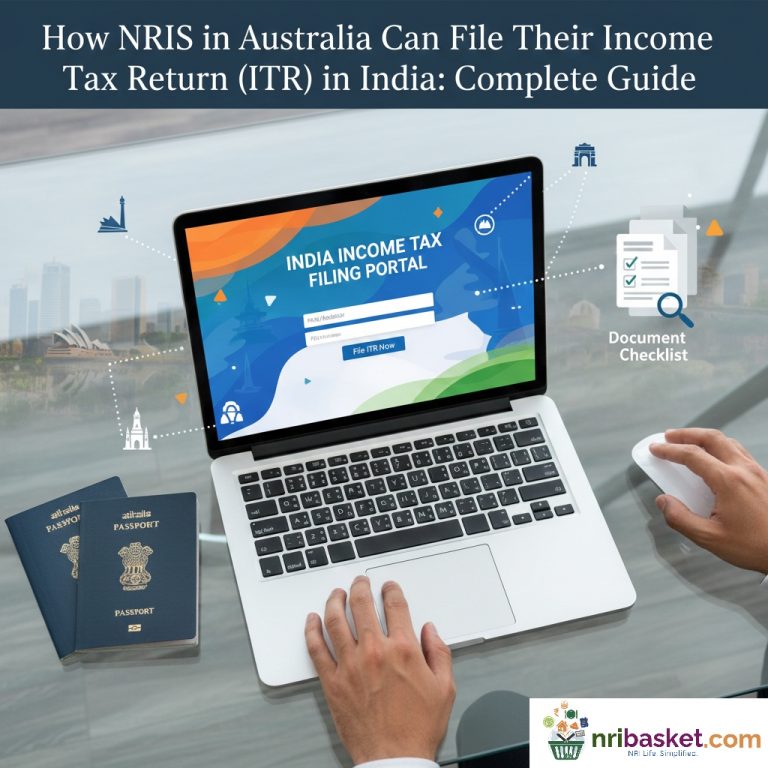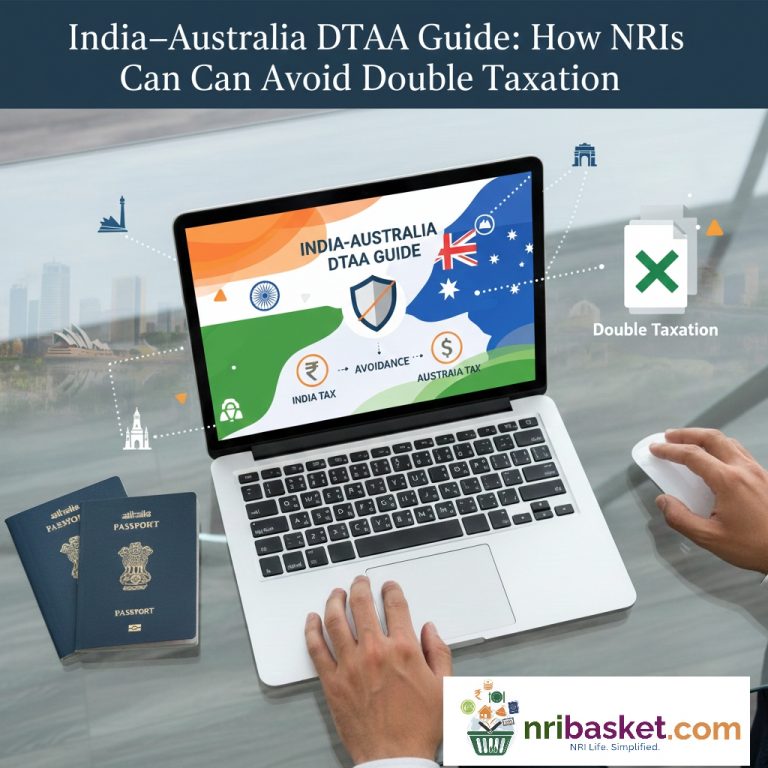
Form NR73 & NR74 Guide
Form NR73 and NR74: When to File and How to Sever Residential Ties with Canada
Moving out of Canada for work or settling abroad permanently? The Canada Revenue Agency (CRA) uses Form NR73 and Form NR74 to determine your residency status for tax purposes.
Understanding these forms is crucial if you are planning to become a non-resident of Canada or returning after a long stay abroad.
This detailed guide explains when to submit Form NR73 (Determination of Residency Status – Leaving Canada) and Form NR74 (Determination of Residency Status – Entering Canada),
and how to sever residential ties with Canada correctly to avoid double taxation or unwanted CRA scrutiny.
Whether you’re an NRI, digital nomad, or a Canadian planning to relocate, this article will help you make informed decisions and stay compliant with CRA rules.
Have a question or want us to add your scenario?
Tell us what you need — we’ll update this guide and answer publicly so other NRIs can benefit. Your question may be featured in the next update.
Long Answer: Form NR73 (Determination of Residency Status – Leaving Canada) is used to inform the CRA that you have left Canada and to request an official decision on whether you are still considered a resident for tax purposes. It’s mainly used by individuals moving abroad permanently.
Long Answer: Form NR74 (Determination of Residency Status – Entering Canada) is filed when you return to Canada after living abroad. It helps the CRA assess whether you’ve re-established significant residential ties and are now considered a Canadian resident again for tax purposes.
Long Answer: The CRA does not require you to file Form NR73 or NR74. However, many people file these forms voluntarily to obtain written confirmation of their residency status, which can help avoid confusion or disputes later when filing taxes as a non-resident or returning resident.
Long Answer: If you plan to leave Canada and establish residency in another country, you can file Form NR73 to confirm that you’ve severed residential ties. It’s commonly filed by Canadians becoming NRIs (Non-Resident Indians) or expatriates working overseas long-term.
Long Answer: You can file Form NR73 once you have physically left Canada and established residential ties elsewhere. This form should be filed before the next tax season to ensure your residency status is clear for income reporting purposes.
Long Answer: The CRA defines residential ties as relationships that indicate you still have a home base in Canada. This includes owning a home, having a spouse or dependents in Canada, keeping Canadian bank accounts, or retaining a driver’s licence or health card.
Long Answer: To sever residential ties, you should sell or rent out your Canadian property, move your spouse and dependents abroad, close Canadian bank and investment accounts (if possible), cancel health coverage, and establish new ties in your new country of residence.
Long Answer: If you maintain major residential ties, the CRA may continue taxing your worldwide income as if you never left Canada. This can result in double taxation and additional filing obligations abroad, especially for NRIs with Indian income.
Long Answer: If your stay abroad is temporary (for studies or a short work assignment), and you maintain significant residential ties in Canada, you are likely still considered a factual resident. Filing NR73 is more relevant for those leaving Canada permanently.
Long Answer: When you submit Form NR73, the CRA reviews your situation and issues a letter stating their opinion on your residency status. This is not a legal ruling but serves as an official reference for tax purposes.
Long Answer: Form NR73 applies when you are leaving Canada and want the CRA to confirm your departure residency status. Form NR74 applies when you are moving or returning to Canada and want to determine if you’ve become a resident again for tax purposes.
Long Answer: You may attach copies of your passport stamps, foreign visa or residence permit, property sale or lease agreements, employment contracts, and any proof showing you’ve moved abroad and established ties there.
Long Answer: Processing times can vary depending on the complexity of your case and the documentation provided. You can expect a written response from the CRA in approximately 8 to 16 weeks after submission.
Long Answer: Form NR73 cannot currently be submitted electronically through the CRA’s My Account portal. You must print, fill, sign, and mail it to the International and Ottawa Tax Services Office handling non-resident cases.
Long Answer: You can still file your Canadian tax return as a non-resident even if the CRA hasn’t yet responded to your NR73 form. However, it’s wise to attach a copy of the NR73 and explain your situation in your tax return notes.
Long Answer: Once you become a non-resident, you are taxed only on income earned from Canadian sources, such as rent from Canadian property, dividends from Canadian companies, or pension payments.
Long Answer: Significant ties include a spouse or dependents in Canada, a home in Canada, or personal property such as a car. Secondary ties include bank accounts, memberships, and provincial documents.
Long Answer: A factual resident is someone who lives temporarily outside Canada but maintains strong residential ties. You continue filing Canadian tax returns on worldwide income until you sever ties.
Long Answer: Provincial health insurance is for residents only. Once you declare non-residency, you may lose access to public healthcare benefits such as OHIP in Ontario or MSP in British Columbia.
Long Answer: Your citizenship or permanent residency status does not change by filing Form NR73. It only affects how you are taxed by the CRA, not your legal right to live or return to Canada.
Long Answer: Banks are required to deduct non-resident withholding tax on interest or investment income. Informing them ensures proper tax treatment and compliance with CRA reporting rules.
Long Answer: Having a permanent Canadian mailing address can indicate ongoing residential ties. It’s better to use your new foreign address or that of a tax representative in Canada for correspondence.
Long Answer: You can own real estate in Canada as a non-resident. However, if it’s a primary home or used frequently, the CRA may still consider it a strong residential tie unless it’s rented or sold.
Long Answer: When you become a non-resident, the CRA may treat some assets as if you sold them at fair market value (called “deemed disposition”). This departure tax applies to investments like shares and mutual funds.
Long Answer: Filing NR73 provides written confirmation of your non-resident status, which can prevent future tax disputes and simplify international tax reporting in your new country of residence.
Long Answer: If the CRA determines you are still a resident, they can reassess your tax returns and require you to report worldwide income again. It’s important to provide strong evidence of severed ties and foreign residency.
Long Answer: NRIs can maintain existing RRSP accounts and withdraw or contribute if they have Canadian income. TFSA contributions are not allowed as non-residents, and penalties may apply if you contribute while abroad.
Long Answer: You can keep your Canadian credit cards, but maintaining too many active accounts might indicate financial ties. Keeping one card for travel or emergencies is acceptable.
Long Answer: When you move back, file Form NR74 to help CRA determine if you’ve re-established residential ties. Once accepted as a resident, you’ll start reporting worldwide income again.
Long Answer: Residency determination is complex, especially if you have property, income, or family ties in multiple countries. A tax professional can ensure you comply with CRA and foreign tax laws correctly.
Form NR73 Canadian NRI, Sever residential ties Canada for tax purposes, NR73 vs NR74, CRA residency determination, NRI tax Canada




